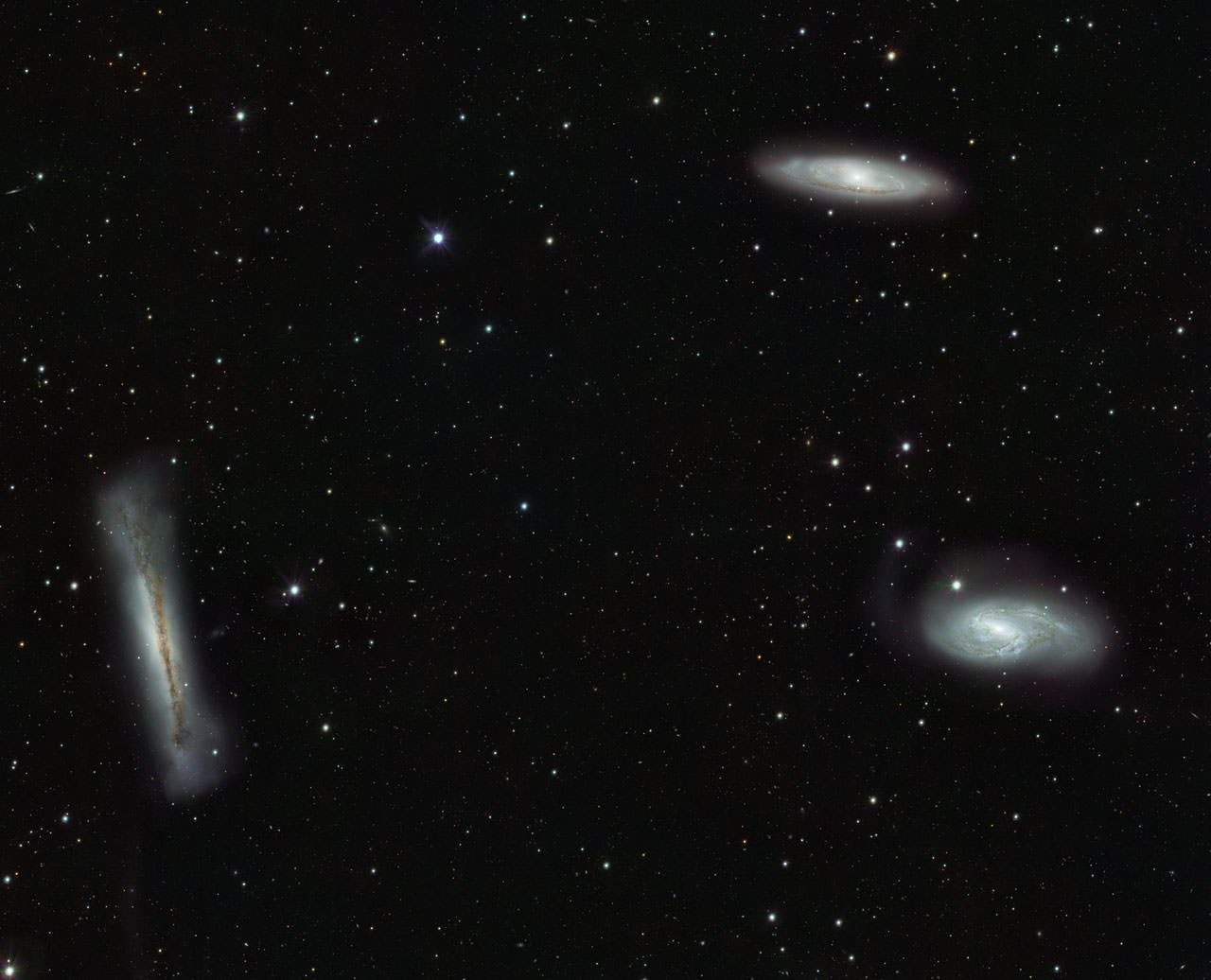[/caption]
Here’s a brand new, magnificent look at the Leo Triplet — a group of interacting galaxies about 35 million light-years from Earth. This wide field of view comes courtesy of the VLT Survey Telescope (VST) at the Paranal Observatory. It has a field of view twice as broad as the full Moon — which is unusual for a big telescope – and the FOV is wide enough to frame all three members of the group in a single picture. But there’s also a great new view of galaxies in the background, as the VST also brings to light large numbers of fainter and more distant galaxies, some through the wonders of microlensing.
Microlensing is a gravitational lensing phenomenon where the presence of a dim but massive object can be inferred from the effect of its gravity on light coming from a more distant star. If, due to a chance alignment, the dim object passes sufficiently close to our line of sight to the more distant star, its gravitational field bends the light coming from the background star. This can lead to a measurable increase in the background star’s brightness. As microlensing events rely on rare chance alignments, they are usually found by large surveys that can observe great numbers of potential background stars.
One of the science goals of the VST is to search for much fainter objects in the Milky Way, such as brown dwarf stars, planets, neutron stars and black holes, and microlensing is helpful in finding these elusive objects.
All three of the big, main galaxies seen here are spirals like our own Milky Way galaxy, even though this may not be immediately obvious in this image because their discs are tilted at different angles to our line of sight. NGC 3628, left, is seen edge-on, while the Messier objects M 65 (upper right) and M 66 (lower right), on the other hand, are inclined enough to make their spiral arms visible.
Get more information and see a larger version of this image at the ESO website.


Leo is a zodiacal constellation and accordingly several asteroid trails (short green and 2-colored red-magenta trails) can be seen in the larger ESO images: http://www.eso.org/public/archives/images/publicationjpg/eso1126a.jpg
Three trails can be found to the left of M 66 (lower right) and there are trails to the left and right of NGC 3628 (lower left). The ESO press release says at least 10 asteroid trails are in this image. How many can you find?
Thanks for the ESO ref. I could spend hours scanning this image; I downloaded it to zoom in using my viewer. I count 7 (I think) so far. Is the colour separation (red/violet) a filter/processing anomaly or an artifact? If it’s Doppler, they’re headin at us at a pretty fair clip, lol. Also, are those elongated green objects artifacts or Voorwerpjes? lol again.
According to the ESO website, the exposure with the green trails was taken on a different night than the exposures with red-magenta trails (2 images taken sequentially over one night). I downloaded a huge 260Mb version of the image to push deep into the many galaxies and several galaxy clusters in the field but found the asteroid trails became much easier to locate(well…duh). I’m up to 16 or 17 asteroids at this point, though some are only green or red-purple “stars” appearing slightly elongated (some are amazingly bright).
But the backdrop, galaxies/clusters, is what I’m really interested in, and there are plenty to go around here. Large images like this are fun to explore on cloudy nights or while waiting for that hole in the clouds to drift by. 😉
[Extra credit…..can you make out the ghostly tidal tail extending (downward) away from NGC 3628, as seen in this image: http://apod.nasa.gov/apod/ap070727.html ]
Thanks Jon for the explanation. I didn’t think to go to the ESO web site. Yes, I see the tidal tail in the apod image. Strange that it doesn’t show up in the ESO image? Also strange is the difference in the star/galaxy scape in the backgrounds. Obviously equipment differences. Astrophotography is not in my area of expertise. lol
I too like to take advantage of images that are also rich in background eye candy.